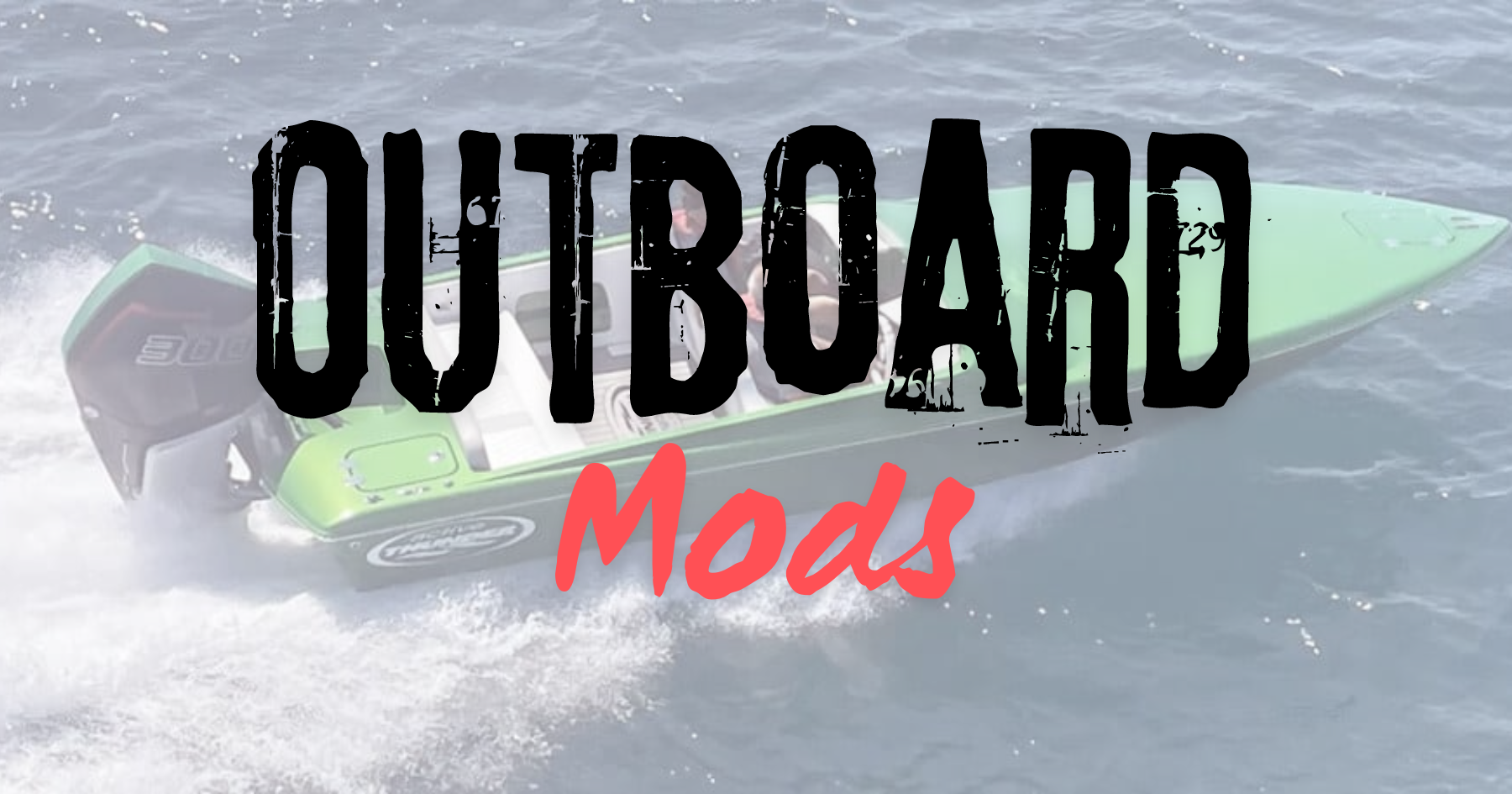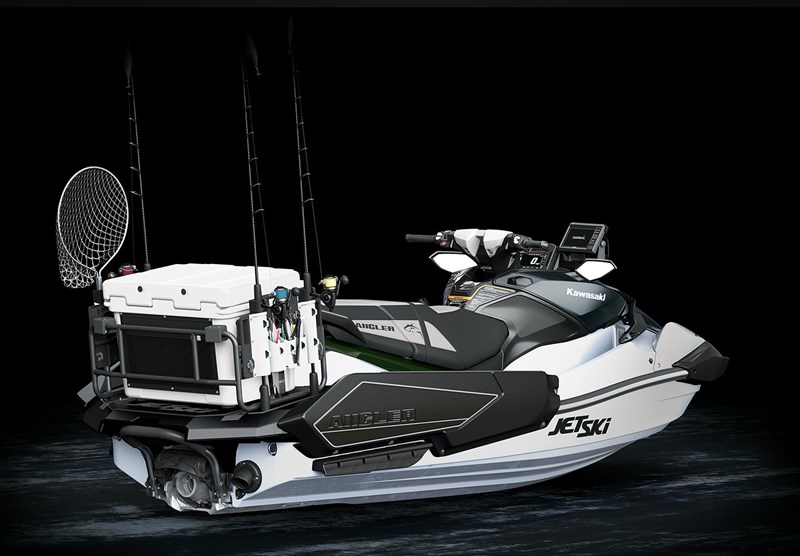Cubera Snapper: Expert Tips for Catching and Cooking
The cubera snapper, also known as Lutjanus cyanopterus, is a prized catch for anglers in the western Atlantic Ocean and Caribbean Sea. This large, powerful fish can grow up to 125 pounds, making it the largest of all snapper species. While it is highly sought after for its size and strength, cubera snapper have been known to cause ciguatera poisoning, a foodborne illness that comes from eating certain fish.

Cubera snapper are easily recognizable by their bronze to dark gray color and strong jaw filled with sharp teeth. They thrive in reef habitats where they hunt for a variety of prey, including smaller fish and crustaceans.
Their nocturnal behavior makes night fishing a popular method for catching them, often using live lobster as bait.
Conservation efforts are increasingly important for cubera snapper due to their popularity among commercial and recreational fishers. Overfishing poses a significant threat, as does the risk of ciguatera poisoning which impacts their commercial value.
Knowing where and how to fish responsibly ensures the continued presence of this incredible species in our oceans.
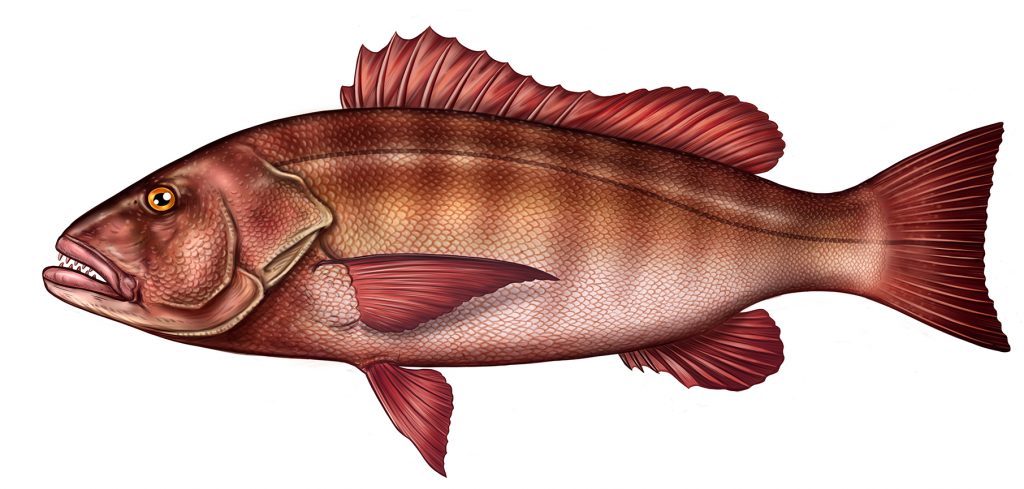
Key Takeaways
- Cubera snapper can cause ciguatera poisoning.
- They are the largest snapper species and live in reef habitats.
- Conservation is essential due to overfishing risks.
Identification and Appearance
The cubera snapper has distinct physical features that make it easy to identify. These include its large size, striking coloration, and specific fin and facial characteristics.
Size and Structure
The cubera snapper is one of the largest members of the snapper family, often reaching weights of around 40 pounds. Some larger specimens can weigh even more.
It has an elongated, oval-shaped body that is less deep than many other snappers. This streamlined shape aids in its predatory lifestyle.
The body structure is robust and designed for power, helping it navigate swiftly through water to catch prey.

Coloration and Patterns
Cubera snappers have a dark brown or gray coloration. Sometimes, they display a reddish hue, depending on the habitat and lighting conditions.
They can also have pale vertical bars on their sides, which may not always be visible. These bars help in blending with underwater environments.
Their overall coloration can sometimes be confused with the gray snapper, but careful observation reveals distinct differences.
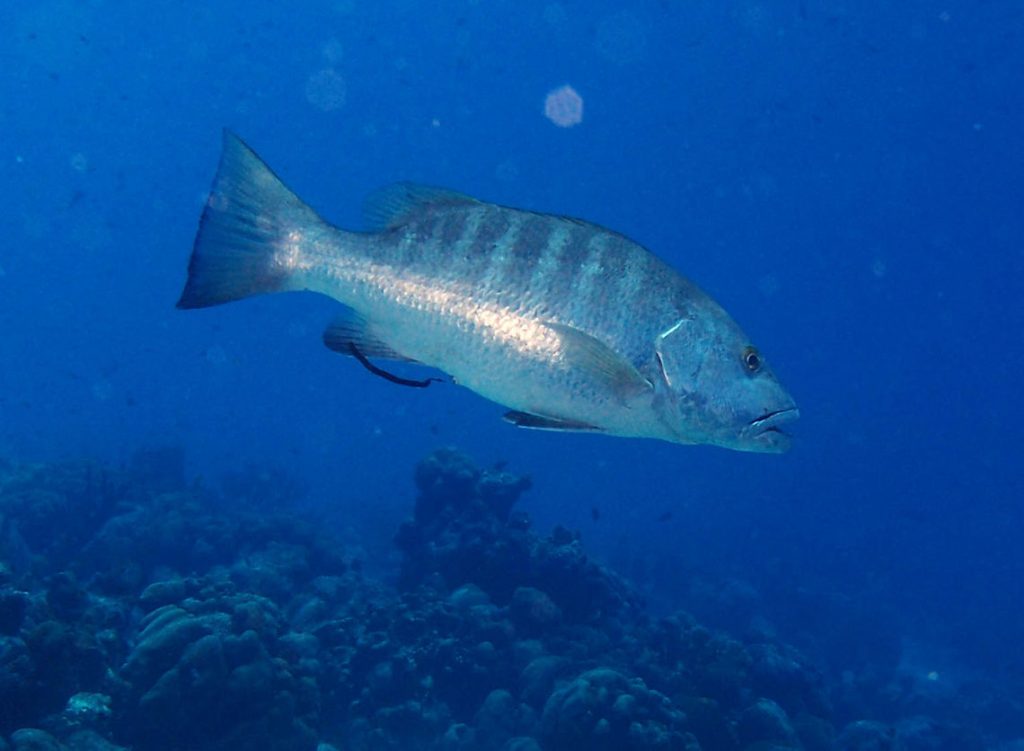
Fins and Facial Features
The cubera snapper’s fins are well-developed and strong. It has a dorsal fin that runs along the length of its back, which aids in balance and steering. The pectoral fins are also sturdy, providing additional maneuverability.
The anal fin is located toward the rear and aids in stability, while the caudal fin is broad and powerful, allowing for bursts of speed.
Facially, the cubera snapper is notable for its thick lips and large mouth. It has strong canine teeth, with one pair visible when the mouth is closed.
A unique feature is the triangular vomerine tooth patch on the roof of its mouth, distinguishing it from similar species like the gray snapper, which has an anchor-shaped tooth patch.
Habitat and Distribution
The cubera snapper is a marine fish found in the western Atlantic Ocean and is known for its preference for varied underwater environments that offer plenty of shelter.
Geographical Range
The cubera snapper inhabits regions from Nova Scotia to Brazil, including the Gulf of Mexico, the Caribbean Sea, and along the coastlines of the United States, Mexico, and the Bahamas. This fish is also found in Bermuda and regularly around Cuba.
These areas provide the warm coastal waters and reef systems that the cubera snapper favors.
Occasionally, they extend to the outer edges of the Western Atlantic, making them a common sight around Florida and other key locations in the region.

Preferred Environments
Cubera’s preferred habitats are diverse. They thrive in rocky reefs, wrecks, and offshore structures that offer features like submerged ledges, caves, and crevices.
These environments provide the ideal places for them to seek shelter and ambush prey.
They are often seen around mangroves, coastal waters, sea grass beds, and outer reef slopes.
Generally, cubera snappers are found in depths ranging from 20 feet to 200 feet, making them adaptable to varied underwater landscapes including sandy drop-offs and other reef habitats.
Diet and Feeding Habits
Cubera snappers are carnivorous predators that primarily hunt other fish and various crustaceans. They use their powerful jaws and teeth to effectively capture and consume their prey.
Typical Prey
Cubera snappers mainly feed on other fish, such as barracudas and groupers. They also consume crustaceans, including crabs and lobsters.
Their sharp, canine teeth allow them to catch and hold onto slippery prey.
They may also eat other smaller marine animals like rays and moray eels. This varied diet ensures that they have access to a steady food supply in their habitats.

Feeding Strategies
Cubera snappers often hunt near the ocean floor, targeting areas around hard structures like reefs and wrecks. This behavior allows them to ambush prey that frequent these locations.
They use their strong jaws to crush the shells of crustaceans, enabling them to eat lobsters and crabs. For fish, they rely on swift, powerful bites to immobilize their target.
Feeding mainly during the night, cubera snappers benefit from the cover of darkness to surprise their prey. This nocturnal hunting strategy makes them effective and skilled predators in their environment.
Reproduction and Life Cycle
The cubera snapper (Lutjanus cyanopterus) has a fascinating life cycle, particularly in its methods of reproduction and development from eggs to juveniles. These aspects play a crucial role in its population dynamics and conservation.
Mating and Spawning
Cubera snappers reproduce through a process known as spawning.
Females release thousands of eggs into the water, which are then fertilized by males.
Spawning usually occurs in offshore waters during warmer months, specifically from June to August, in the Caribbean.
They often form large groups called spawning aggregations during this period. These aggregations can include hundreds to thousands of individuals, making them highly vulnerable to overfishing.
The spawning activity is influenced by lunar cycles, with peak spawning often coinciding with full moon phases. This timing helps increase the chances of fertilization and survival of the eggs.

Development from Eggs to Juveniles
After fertilization, cubera snapper eggs are pelagic.
They float in the open ocean and hatch within about 24 hours. Once hatched, the larvae are tiny and vulnerable, relying on plankton for nourishment.
As they grow, they undergo several developmental stages.
Juveniles eventually settle in shallow coastal waters, where they find shelter among mangroves and seagrasses. This habitat provides protection from predators and abundant food resources.

As they continue to grow, they gradually move to deeper waters.
The transition from larvae to juvenile stages is critical for their survival, requiring suitable habitats free from excessive predation and human disturbances.
Cubera snappers reach reproductive age at about 4-5 years, continuing the cycle of life in their marine environment.
Conservation and Threats
Cubera snappers face several challenges in their environment, primarily due to human activities and natural predation. This section will cover their current conservation status and the specific human impacts they endure.
Current Conservation Status
The cubera snapper is not listed as endangered, but it is vulnerable to overfishing and habitat destruction.
Conservation efforts are essential to protect this species.
In some regions, cubera snapper populations have decreased due to high demand for both commercial and recreational fishing.
Protective measures include fishing regulations and marine protected areas (MPAs). These measures help control the harvesting of cubera snappers and allow populations to stabilize.
Enforcement of fishing laws is crucial to ensure compliance and effectiveness.
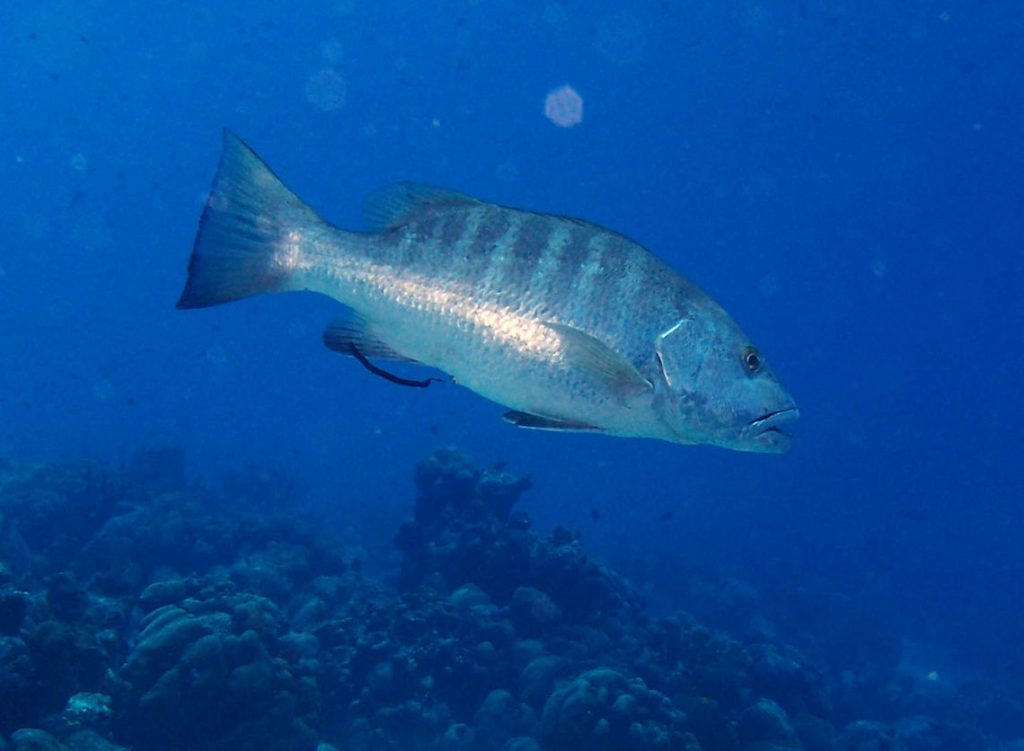
Human Impact and Overfishing
Human activities significantly impact cubera snapper populations.
Overfishing is a primary threat, as these fish are highly sought after for their size and taste. Large-scale commercial fishing operations, as well as recreational fishing, contribute to the decline of this species.
Habitat destruction is another concern. Coastal development and pollution can damage the coral reefs and mangroves where cubera snappers live.
Mitigating these impacts involves stricter regulations on coastal development and promoting sustainable fishing practices. Reducing pollution and restoring habitats also play a pivotal role in conservation efforts.
Education on sustainable fishing and more support for conservation programs are key steps to protect cubera snappers for future generations.
Behavioral Traits
Cubera snappers are known for their complex social structures and habitual patterns. They exhibit unique behaviors that are significant both in their natural habitats and interactions with other marine species.
Social Structure and Schooling
Cubera snappers, part of the Family Lutjanidae, often form schools, particularly during spawning season. These schools are usually seen in inshore areas and around reefs.
Social behavior: They display a social hierarchy within schools, where larger individuals dominate.
This social structure helps them coordinate hunting and protection from predators.
Interactions: They interact with other marine species, including other snappers and larger predatory fish.
Their behavior in schools can be quite dynamic, especially when they are feeding or avoiding threats.
Habitual Patterns
Cubera snappers are primarily found in the warm waters of the western Atlantic Ocean, including the Keys and other tropical regions. They prefer habitats with strong currents and plenty of cover, such as reefs and rocky outcrops.
Daily activities: They are predominantly nocturnal feeders, using their keen senses to hunt for fish and crustaceans.
They rely on their sharp nostrils and sensitive preoperculum to detect prey.
Seasonal behavior: During the late summer, they gather for spawning. These events are crucial for their population dynamics.
Some individuals can grow up to 40 pounds, adding to their significance as game fish.
Interaction with Humans
Cubera snapper is highly prized by game fishermen for its size and strength. It can grow over 5 feet long and weigh more than 120 pounds, making it a challenging catch.
Recreational fishing for cubera snapper is popular in the Caribbean and South Atlantic.
Anglers often target this fish using heavy tackle due to its powerful nature.
Some people catch cubera snapper commercially. It's an important species for fisheries, contributing to local economies. The fish is sought after for its tasty, firm meat.
Cubera snapper can cause ciguatera poisoning. This illness happens when people eat fish that have consumed toxic algae. Symptoms include nausea, vomiting, and neurological issues.
Conservation efforts are crucial for cubera snapper. The IUCN lists it as "Vulnerable."
Overfishing and habitat loss are major concerns. Sustainable fishing practices help protect the population.
Fisheries management includes size limits and seasonal restrictions. These measures aim to ensure the species can reproduce and maintain healthy numbers.
Frequently Asked Questions
Cubera snappers are known for their impressive size and strength, making them a popular target among anglers. Below are answers to some common questions about this remarkable fish.
What are the size limits for catching cubera snappers in various regions?
Different regions have different size limits for catching cubera snappers.
For instance, in Florida, there are specific regulations that mandate a minimum size limit of 12 inches. Other regions may have varying limits, so it’s important to check local regulations before fishing.
What is the recorded world record size for a cubera snapper?
The world record for the largest cubera snapper ever caught stands at a whopping 124 pounds. This record highlights the potential size and strength of this impressive fish.
What distinguishes juvenile cubera snappers from adults?
Juvenile cubera snappers are often lighter in color and lack the darker tones seen in adults.
They also have less pronounced teeth and are generally smaller in size, making it easier to differentiate them from mature individuals.
Is there a difference in taste between cubera snapper and other snapper species?
Cubera snapper has a firm, white flesh that is comparable in taste to other snapper species, but it is often considered slightly sweeter.
Each snapper species may have subtle taste differences, influencing preferences among seafood lovers.
Are there regulations for keeping cubera snapper in Florida?
Yes, Florida has specific regulations for keeping cubera snappers.
Anglers must adhere to size and bag limits, as well as seasonal restrictions. It is essential to stay informed about the latest rules to ensure legal and sustainable fishing practices.
How can you differentiate between a cubera snapper and a mangrove snapper?
Cubera snappers are larger and have more prominent teeth compared to mangrove snappers. Meanwhile, mangrove snappers have a darker, more mottled appearance.
On the other hand, cubera snappers exhibit a more uniform, reddish-brown color. These physical differences help in accurately identifying the species.
Charlie is Editor-in-Chief of Sea Magazine

